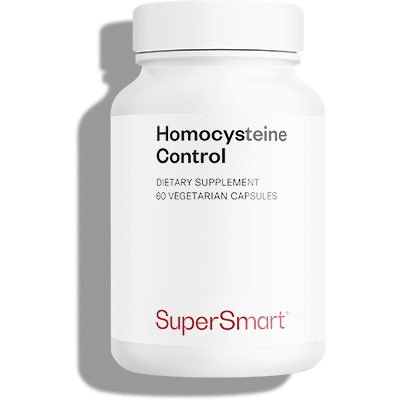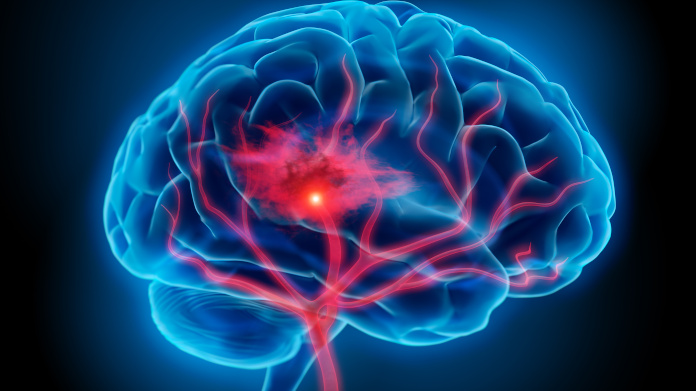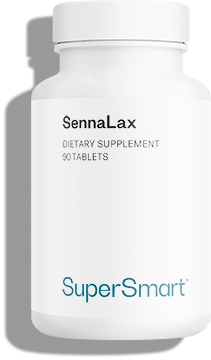Excess homocysteine accused of increasing cardiovascular risk
Recent studies have reaffirmed the long-suspected link between excess homocysteine and the risk of developing certain diseases, particularly cardiovascular disease.

What is homocysteine and how does it affect the cardiovascular system?
Homocysteine is a sulphur-containing amino acid that is produced naturally by our cells during protein metabolism. More precisely, it is an intermediate in the methylation cycle, which, among other things, enables the synthesis of glutathione, our most powerful endogenous antioxidant. Produced during the breakdown of methionine in the liver (a reaction called demethylation), it is then recycled into methionine (by remethylation) or converted into cysteine (by transsulfuration) (1).
When this conversion proves ineffective, homocysteine accumulates excessively in the blood: this is known as hyperhomocysteinemia (2). Since the work of Dr McCully in 1969, doctors have suspected that high homocysteine levels are an independent risk factor for cardiovascular disease (3). In particular, this condition may lead to weakening of the arterial walls, increased oxidation of LDL cholesterol (involved in the formation of atherosclerotic plaque) and coagulation disorders. A hypothesis that seems to be borne out by the latest studies...
Homocysteine and cardiovascular risk: what recent studies reveal
Effects of homocysteine on vascular inflammation
An initial animal study reported that mice suffering from hyperhomocysteinemia had larger atherosclerotic plaques and increased secretion of inflammatory cytokines (4). According to the researchers, this finding can be explained by several overlapping mechanisms: inflammation of the endothelial cells that line the inner walls of blood vessels, calcium disorders, massive release of reactive oxygen species, and pyroptosis (inflammatory death) of the macrophages that make up some of the arterial deposits.
Hyperhomocysteinemia and coronary heart disease
In humans, an initial meta-analysis of 59 studies compared the plasma homocysteine concentrations in 9,381 subjects with coronary artery disease with those of 12,188 control subjects. It was found that patients had significantly higher homocysteine levels, confirming the link between hyperhomocysteinemia and coronary heart disease (5). However, this association appears to be more marked in Asian and African populations, and is thought to increase with age.
Excess homocysteine and cerebrovascular disorders
A second meta-analysis compiled 21 studies involving a total of 9,888 participants, including 5,031 patients hospitalised for ischaemic stroke (obstruction of a cerebral artery by a blood clot). Here again, the researchers found that the patients had higher homocysteine levels than the controls. According to them, this excessive accumulation led to less effective DNA repair, necrosis of the vascular wall and the production of serine elastase in vascular smooth muscle cells, which stiffened the vessel walls (6). According to the same publication, hyperhomocysteinemia also increases the risk of intracerebral haemorrhage and is even a predictive indicator of recurrence.
A retrospective study, which included 200 stroke patients admitted to the neurology department of Guyuan People's Hospital between 2022 and 2024, clarifies the previous results. More specifically, it revealed a positive correlation between high homocysteine levels and the severity of lesions in the white matter, a critical area for the transmission of information in the nervous system (7).
How can homocysteine levels be lowered naturally?
Hyperhomocysteinemia can result from a genetic mutation, the use of certain drugs or smoking (8). In other cases, an unbalanced or insufficiently diversified diet is generally to blame. Certain dietary measures can help to normalise excessively high homocysteine levels:
- reduce, but do not completely eliminate, dietary sources of methionine. In particular, reduce meat products rich in saturated fats (such as charcuterie and red meat), excessive consumption of which is also harmful to cardiovascular health (9);
- increase your intake of certain B-group vitamins that play a part in the normal metabolism of homocysteine. These include B9 and B12, which are essential cofactors in the recycling of homocysteine into methionine (found in green leafy vegetables and animal products respectively), and B6, which supports the conversion of homocysteine into cysteine (found in offal, poultry, pulses and nuts) (10);
- eat more beetroot, spinach and wholegrain cereals, which provide betaine (11). As a cofactor of betaine-homocysteine methyltransferase (BHMT), it also contributes to the normal metabolism of homocysteine by mediating its conversion to methionine via a metabolic pathway that is an alternative to B vitamins. Also consider foods rich in choline, which is converted to betaine by the liver: egg yolks, fish, cruciferous vegetables, seeds, etc. (12).
Finally, there are supplements that combine these different nutrients in a single formula to ensure adequate intake.
![]() Take a look at Homocysteine Control, which combines betaine, choline and the trio of B6, B9 and B12 in their most stable and active forms (pyridoxal-5-phosphate for vitamin B6, 5-MTHF for vitamin B9, methycobalamin for vitamin B12, etc.).
Take a look at Homocysteine Control, which combines betaine, choline and the trio of B6, B9 and B12 in their most stable and active forms (pyridoxal-5-phosphate for vitamin B6, 5-MTHF for vitamin B9, methycobalamin for vitamin B12, etc.).
SUPERSMART ADVICE
References
- Kumar A, Palfrey HA, Pathak R, Kadowitz PJ, Gettys TW, Murthy SN. The metabolism and significance of homocysteine in nutrition and health. Nutr Metab (Lond). 2017 Dec 22;14:78. doi: 10.1186/s12986-017-0233-z. PMID: 29299040; PMCID: PMC5741875.
- Kumar A, Palfrey HA, Pathak R, Kadowitz PJ, Gettys TW, Murthy SN. The metabolism and significance of homocysteine in nutrition and health. Nutr Metab (Lond). 2017 Dec 22;14:78. doi: 10.1186/s12986-017-0233-z. PMID: 29299040; PMCID: PMC5741875.
- McCully KS. Hyperhomocysteinemia and arteriosclerosis: historical perspectives. Clin Chem Lab Med. 2005;43(10):980-6. doi: 10.1515/CCLM.2005.172. PMID: 16197285.
- Zhang S, Lv Y, Luo X, Weng X, Qi J, Bai X, Zhao C, Zeng M, Bao X, Dai X, Zhang Y, Chen Y, Liu M, Hu S, Li J, Jia H. Homocysteine promotes atherosclerosis through macrophage pyroptosis via endoplasmic reticulum stress and calcium disorder. Mol Med. 2023 Jun 12;29(1):73. doi: 10.1186/s10020-023-00656-z. PMID: 37308812; PMCID: PMC10262416.
- Unadkat SV, Padhi BK, Bhongir AV, Gandhi AP, Shamim MA, Dahiya N, Satapathy P, Rustagi S, Khatib MN, Gaidhane A, Zahiruddin QS, Sah R, Serhan HA. Association between homocysteine and coronary artery disease-trend over time and across the regions: a systematic review and meta-analysis. Egypt Heart J. 2024 Feb 27;76(1):29. doi: 10.1186/s43044-024-00460-y. PMID: 38409614; PMCID: PMC10897093.
- Pinzon RT, Wijaya VO, Veronica V. The role of homocysteine levels as a risk factor of ischemic stroke events: a systematic review and meta-analysis. Front Neurol. 2023 May 12;14:1144584. doi: 10.3389/fneur.2023.1144584. Erratum in: Front Neurol. 2024 Apr 04;15:1404808. doi: 10.3389/fneur.2024.1404808. PMID: 37251231; PMCID: PMC10216881.
- Zhang S, Lv Y, Luo X, Weng X, Qi J, Bai X, Zhao C, Zeng M, Bao X, Dai X, Zhang Y, Chen Y, Liu M, Hu S, Li J, Jia H. Homocysteine promotes atherosclerosis through macrophage pyroptosis via endoplasmic reticulum stress and calcium disorder. Mol Med. 2023 Jun 12;29(1):73. doi: 10.1186/s10020-023-00656-z. PMID: 37308812; PMCID: PMC10262416.
- O'Callaghan P, Meleady R, Fitzgerald T, Graham I; European COMAC group. Smoking and plasma homocysteine. Eur Heart J. 2002 Oct;23(20):1580-6. doi: 10.1053/euhj.2002.3172. PMID: 12323157.
- Haring B, Wang W, Fretts A, Shimbo D, Lee ET, Howard BV, Roman MJ, Devereux RB. Red meat consumption and cardiovascular target organ damage (from the Strong Heart Study). J Hypertens. 2017 Sep;35(9):1794-1800. doi: 10.1097/HJH.0000000000001385. PMID: 28399044; PMCID: PMC5728368.
- Ubbink JB, Vermaak WJ, van der Merwe A, Becker PJ, Delport R, Potgieter HC. Vitamin requirements for the treatment of hyperhomocysteinemia in humans. J Nutr. 1994 Oct;124(10):1927-33. doi: 10.1093/jn/124.10.1927. PMID: 7931701.
- McRae MP. Betaine supplementation decreases plasma homocysteine in healthy adult participants: a meta-analysis. J Chiropr Med. 2013 Mar;12(1):20-5. doi: 10.1016/j.jcm.2012.11.001. PMID: 23997720; PMCID: PMC3610948.
- Olthof MR, Brink EJ, Katan MB, Verhoef P. Choline supplemented as phosphatidylcholine decreases fasting and postmethionine-loading plasma homocysteine concentrations in healthy men. Am J Clin Nutr. 2005 Jul;82(1):111-7. doi: 10.1093/ajcn.82.1.111. PMID: 16002808.
Keywords
1 Days
Delivery is prompt and I never saw a…
Delivery is prompt and I never saw a quality problem with the manufacturing. It is not possible to assess efficacy on a personal basis, since too many factors come into play. Efficacy can only be assessed statistically with a sufficient number of cases.
Roger De Backer
2 Days
I collaborates with the Supersmart…
I collaborates with the Supersmart more than 10 years. Every thing is going good. Quality of the things is good. Delivery comes in time. Five stars definitely !!!
Oleksiy
2 Days
All good
Simple, frictionless site, easy ordering, good delivery updates and execution.
Chris Robbins
4 Days
I feel better
I feel better
Peter Ammann
4 Days
Prompt delivery
Prompt delivery
JAKUB Radisch
6 Days
My new go-to for top quality supplements!
I am buying more and more of my supplements from this superb, high quality company. Cannot recommend it enough. Plus, excellent customer service with a quick, helpful team and speedy deliveries. Highly recommend Supersmart!
Cecilie H.
9 Days
SUPERSMART WHAT ELSE👍
SUPERSMART WHAT ELSE👍
DIEDERLE Christophe
12 Days
Excellent quality products with…
Excellent quality products with innovative formulas, as someone who has been suffering with acid reflux, these supplements have been lifesavers.
Oriana Moniz
12 Days
high quality supplement!
high quality supplement!
GALANT
13 Days
Good service prompt delivery
Good service prompt delivery
Mrs Marcella Reeves
18 Days
I like your clear explanation
I like your clear explanation. And how to make a choice of products for a specific health problem
Ingrid
24 Days
Great product and it arrives quickly.
Great product and it arrives quickly.
SOMMARIVA Gianni
25 Days
Excellent products and fast service.
Excellent products and fast service. What do we need more?
Margarida
29 Days
The variety of products is amazing
The variety of products is amazing, the offers are good and the sending is very fast. I just miss having a bit more of guidance about combinations, possible interactions, etc.
Maria Angeles Verdu
31 Days
It was quick
It was quick.
Timo Antero






